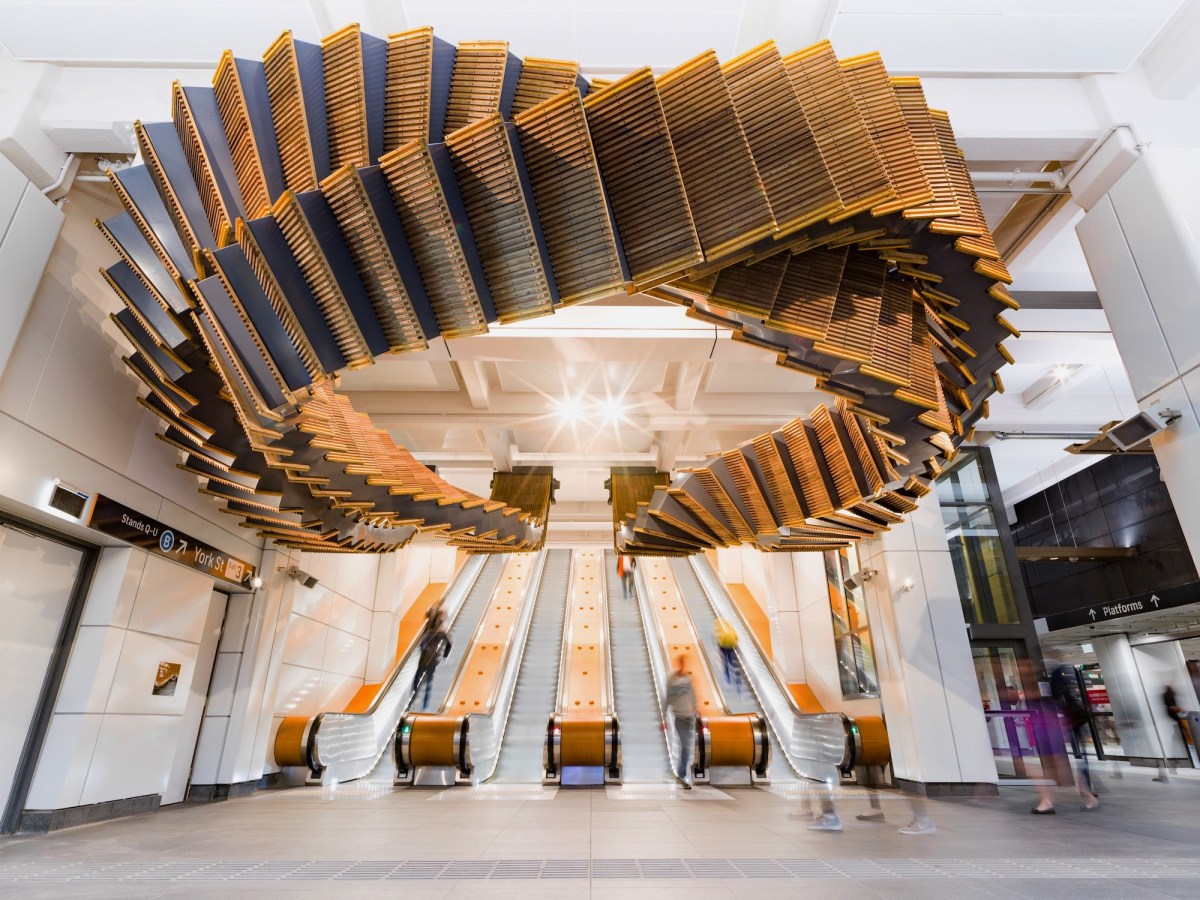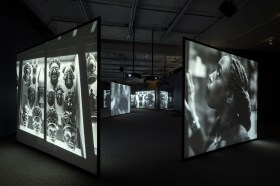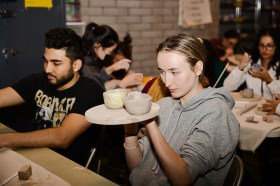We’ve all seen appalling examples of public art – be it for their choice of subject matter, misjudged scale, ill-thought out community engagement or poor maintenance.
That has started to shift in recent years, thanks to a lot more accountability around the commissioning of public artworks. Today there is better attention to community connection, respect for diverse voices and sacred sites.
While these have been wins, there have also been increased challenges in the public art realm for artists. ‘Red tape’ has wrapped up the process in bureaucratic hurdles, the cost of materials and delivery has increased, while the commissioning fees have not always matched that rise, and selection panels have often become convoluted, often driving the process with other agendas than the art itself.
It sounds like a minefield – and in most cases it is. However, the joy for an artist to see their work at scale in a public space, with people engaging with it, outweighs the delivery process. So how can it be a less painful process? Simply, getting the details on the table early.
How do we get public art right?
The good news is that a new Public Art Toolkit, which is free to download, has been produced by Create NSW (an Australian peak arts government organisation), and outlines best practice in policy, commissioning, construction and engagement with artists.
Designed for government agencies and local councils commissioning public art, it can just as easily be used by artists, corporates and developers – offering a clear pathway through respectful negotiation and artwork delivery.
Most often the problem with the public art commissioning processes is that the paperwork gets bogged down in some areas, but then leaves a lot of grey zones when it comes to the articulation of expectations, maintenance, lifespan, copyright and so on.
Create NSW Interim Chief Executive, Annette Pitman says the toolkit is about arming agencies so that they ‘can have greater confidence to create a lasting legacy of valuable public art’.
She continues: ‘Public art makes art part of the everyday, accessible to all. By creating a meaningful focal point in public spaces, public art helps build community connection to places, and contributes many positive social, cultural and environmental impacts.’
In the arts, we have learned that while ‘meaningful’ is a great buzzword, it takes time, planning – and lots of talk.
In an interview with ArtsHub last month, Fiona Hillary (from Melbourn’e RMIT Master of Arts – Art in Public Space) said of commissioning public artworks: ‘The process starts very early on, long before the artwork is even conceived. Good practice is to have a really clear expression of interest or brief so that artists understand what the commissioner is asking for.’
Her tip was to, ‘Read the brief very, very carefully and get your questions answered if there is anything unclear. As artists, we have to be really aware of the work we undertake, and the parameters that are put in place for that work to be commissioned.’
Read: Good public art starts before the ‘art’
It is a view shared by Australian artist Warren Langley, who is well-known for his large-scale site-specific public artworks, which grace Parliament House in Canberra, Amiens’ Maison de la Culture in France, Tacoma Art Museum in the US, and Hong Kong International Airport.
In an earlier interview (Regulations are killing creativity, 2017), Langley made the point that, ‘Every project you do requires a safe work method statement, environmental impact statement and so on. The safe work statements used to be a sheet of paper; the last one we did was a 70-page document.’
With ever-more works being commissioned, that level of detail has become the norm. So how do artists navigate it?
What’s in the toolkit?
Government-produced toolkits can often set off ‘warning bells’ – big on bravado and box ticking, but slim on usable advice.
This toolkit is the contrary of that. It is informative, offering a deep dive on a broad range of topics, and is weighted with case studies and resource links that are genuinely useful.
It starts with simple gate openers, like determining the lifespan of a public artwork, and what is really meant by the terms ‘permanent’, ‘temporary’ or ‘ephemeral’ piece.
It then walks through some of the more abstract considerations, such a choosing the right artists, aka working with self‑employed artists or working with high-profile artists, and what are the pros and pathways for each.
It also looks at the different types of commissioning processes, from an open competition (allowing anyone to apply) or an invited/direct commission, laying out the pros and cons of each.
Understandably, the toolkit gives weight to considerations when using public art for heritage interpretation or for placemaking, and how to identify and engage stakeholders. It tackles things like sustainability principles, how to set up advisory and selection panels, how to structure the brief, when and how to engage consultants and curators, and how to negotiate artist fees.
‘Artists are often not paid enough for the work they do,’ states the toolkit. ‘In the worst cases, they spend all their fees on producing the work and are effectively left working for no pay. This section offers a guide to paying artists fairly.’
Budgets for public artworks can range from tens of thousands for small works to multimillion‑dollar installations by internationally renowned artists. The toolkit outlines that, ‘Artist fees often represent 10% to 15% of the total project budget depending on their role in the design, installation and delivery of the work.’ With an easy-to-follow checklist it helps you map out those costs.
It also unpacks what is meant by site and context. The toolkit states: ‘When you invite an artist to create a new public artwork, they will usually be asked to “respond to the site”. But what does this mean?’
Langley said he used to think public art was anything too big to put in the gallery. That definition today has become far more complex. ‘Everything I do now is related to site. It is less and less about the work, and more about how that artwork relates to, or engages, the site and how it talks to the viewer.
‘It requires a certain shift in the paradigm in the way artists and architects work,‘ he added.
Where this toolkit is a golden resource is through a number of really useful themed checklists, such as things to consider in planning for new media artworks, a checklist of what to include when writing a public art strategy, a selection criteria checklist, a project life cycle and planning checklist and – a great one – an ‘are you installation ready?’ checklist.
The toolkit also tackles those curly topics where projects often come unhinged. Such as copyright – who owns what, and what are you signing away; what if things change and navigating contractual agreements; who is responsible for insurance; when to deaccession or decommission public art; managing risk in a public space, but also managing risk at every stage of the process from planning through to installation and maintenance.
‘When you are planning a new public artwork, it is a good idea to create a Risk Register [which] identifies the risks involved at each stage of the project, and the actions that may be needed to address them,’ advises the kit.
For anyone wanting to work in the public domain, this kit is a must read. It is free – it’s packed with really solid information and streamlines how to navigate what has become an extremely complex landscape.





